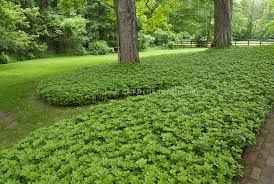A Landscape Gardeners Thoughts Regarding Native vs. Non-Native
- Fran Lansberry
- Feb 1, 2024
- 3 min read
Updated: Feb 5, 2024
As a landscape gardener, I feel the need to ‘simplify’ the native vs non-native plants topic. It arises in many conversations among farmers and gardeners alike. The subject can be as controversial as religion to some. For the homeowners, I want to voice my take on this matter.

My Take. Strictly my opinion.
While I respect our US Ecosystem and Biodiversity, knowing full well the list of non-native plants put out by the government, I sometimes choose non native on purpose. My herb garden comes to mind first. Did you know that Lavender, Thyme, Sage, Oregano, and Parsley are non-natives?
My practice is to research, and make an educated determination of each plant that I want to grow in my garden. The allotted space is a huge consideration. I mentally and physically analyze the site to make sure all light, moisture, soil type, and conditions are ideal for a specific plant. The long term sustainability and my objectives are also a determining factor.
Some non-natives have been used in North America successfully for over 100 years, successfully feeding wildlife, controlling erosion, attracting pollinators, and contributing to medicine and human foods. Still, we must observe the warnings. I honestly and consciously use approximately 70% natives and 30% non natives.
Vinca (periwinkle, myrtle) for example, is on the government's invasive list. Did you know that Vinca is native to Europe and Asia? And its aggression in the garden is to my advantage as a ‘ground cover’ It flowers twice the season and entices our unbiased bees, butterflies, insects, and birds. The white tail deer forage it for winter food too. I love that it is not picky about what type soil it grows in. I love that it works so well under trees so that I do not have to re mulch every year. I love that it is evergreen and blooms beautiful little violet like flowers that feed the pollinators. I don’t care that it is not from this country.
Being native or non native does not enter my mind. What fuels my mind is “what will the consequences be, both short and long term, to adding this particular plant to the landscape?
I am not telling you to defy the government's determination about native vs non native. We should all especially adhere to the ‘Noxious’ (Poisonous) determination. There is a difference between noxious and invasive however. Invasive, in my opinion, is a tad discriminitory.
My point is this: “There are several non natives on the list that are not as obvious as Bamboo or Kudzu to being invasive. Myrtle, Pachasandra, and Norway Spruce(Vinca, Pachasandra, Picea) are examples of non natives, but quite useful and accepted in the North American landscapes.
There are also, several natives that have ‘less than desirable’ tendencies in the landscape, especially to the homeowner with a small garden, for example…Black Walnut (Salix nigra), Common Milkweed (Esclepias syriaca), and Euonymus. (To be clear, I personally love and use Milkweed and Euonymus in my landscape.)
Some Solutions: To add to your ornamental choices and ease your conscience, there are now some non native cultivars that are made sterile so you can enjoy the blooms without spreading seed.
- Spirea has long been a favorite for its extraordinary foliage color and extended blooming in the summer. Yep, Japanese origin. Check out the sterile Spirea ‘Double Play Doozie’.
-Another desired plant is Buddleia, common name Butterfly Bush. Yep…it’s from China. Beautiful summer flowers make it almost irresistible, but it’s been labeled invasive due to the high seed drop and germination rate, consequently overbearing to the natives. Now, thank God, there is the Buddleia ‘Cascade Collection’. After years of trials, we now have the graceful, arching, and sterile blooms of the Butterfly Bush without being invasive.
*The National Garden Bureau has interesting research on this topic, ‘Safe Non Natives for your Garden’.
Let’s admit it, there are those of us who plant mainly for the ornamental value and beautiful blooms. The wildlife and pollinators are an added bonus.
The long and the short of it lies with your discretion. Don’t get hung up on using natives vs. non natives. Especially those that have been used in Estate Gardens here for over 100 years.
- Do your homework.
-Ask a reliable source and read all about it before you make your own conclusions.
-Then Garden Responsibly!


































Thank you Fran,
It’s nice to know that I don’t have to feel guilty anymore about my abundant pachysandra!
So many of the plants we are “gifted” from friends yards are of the invasive nature.